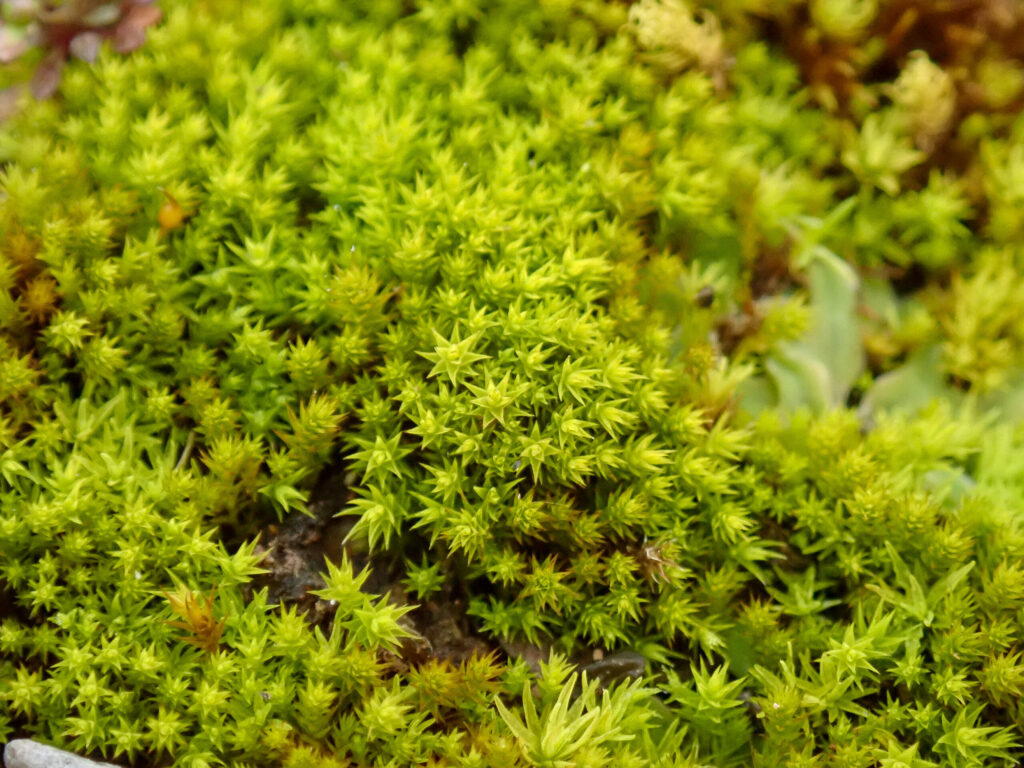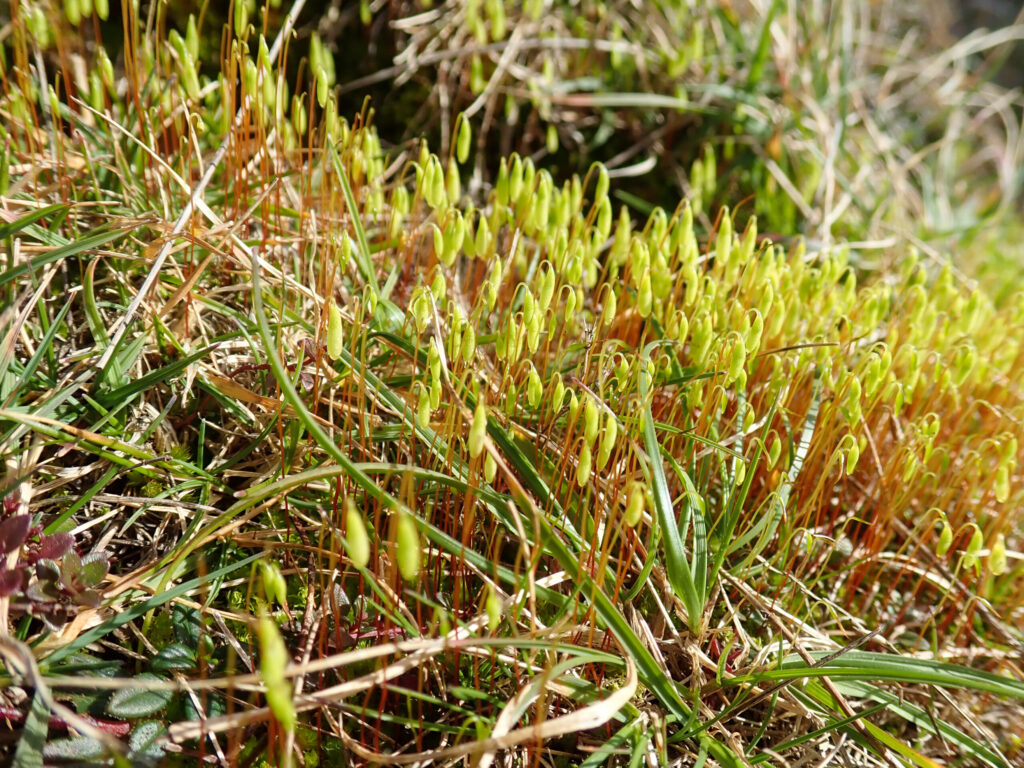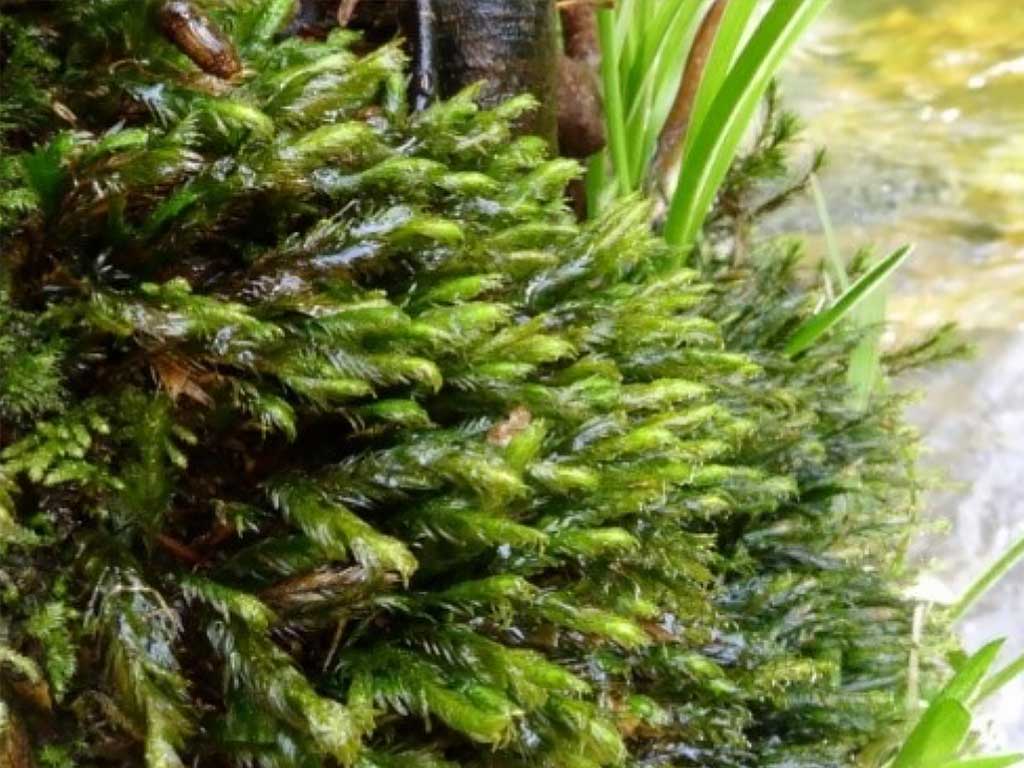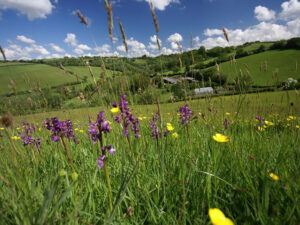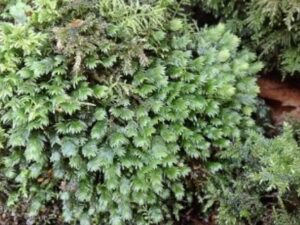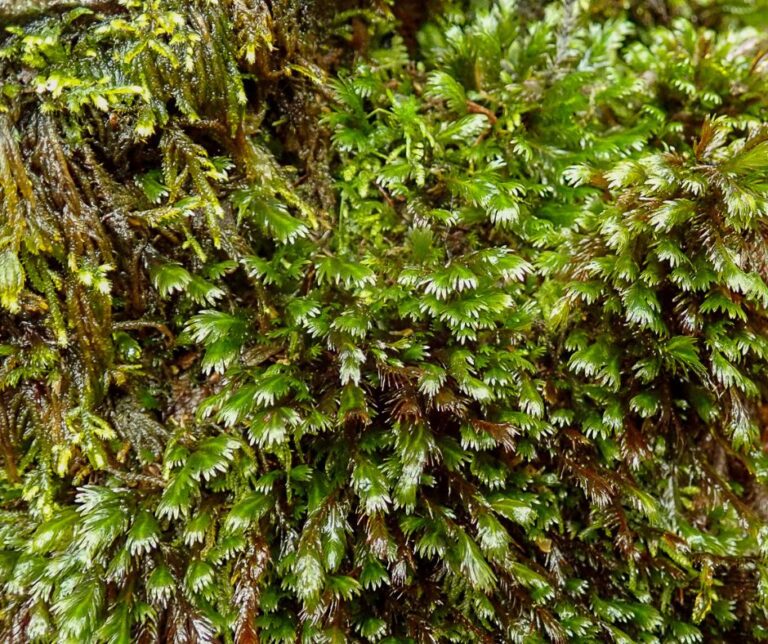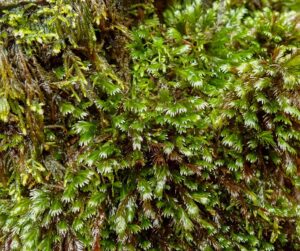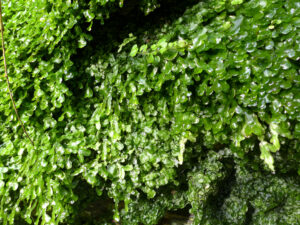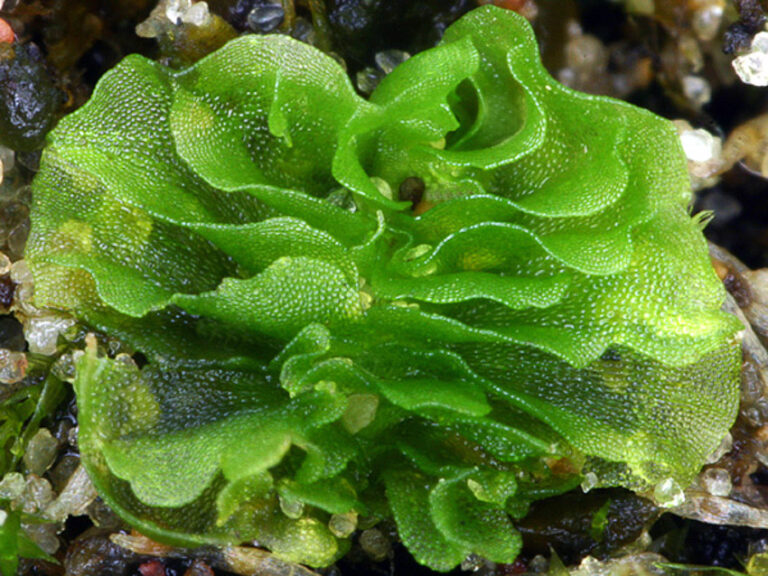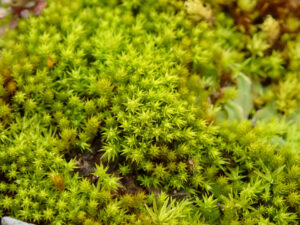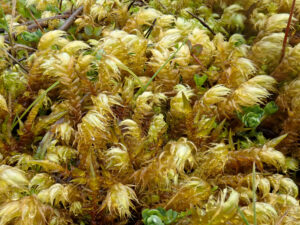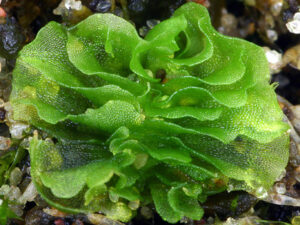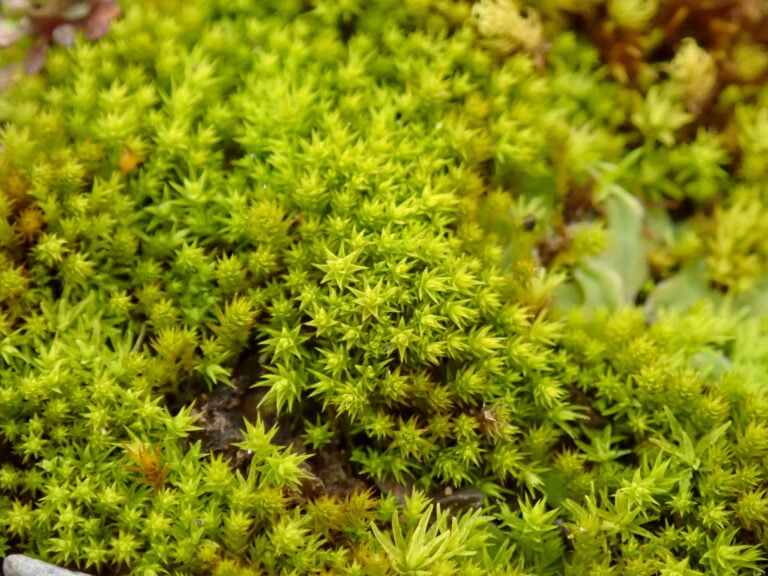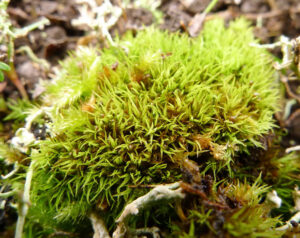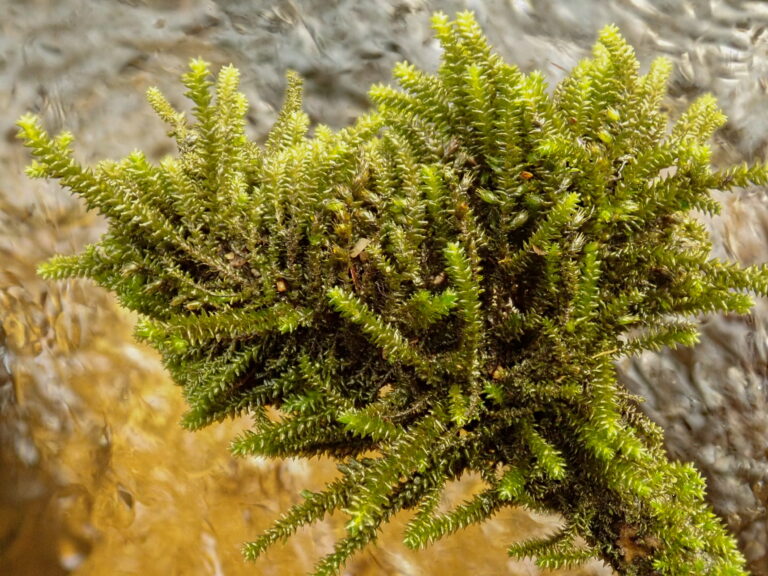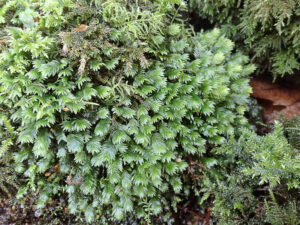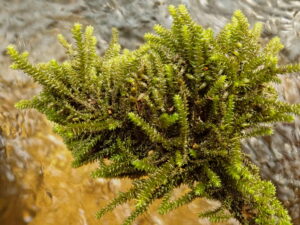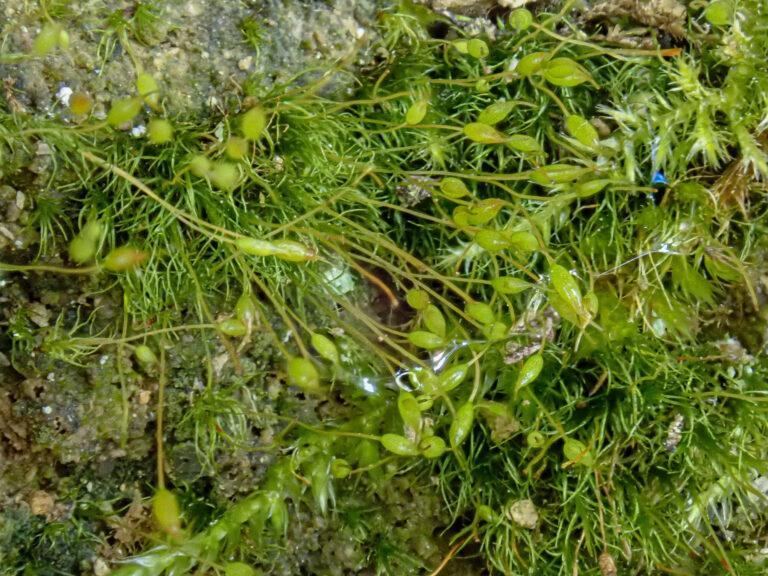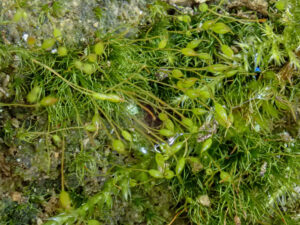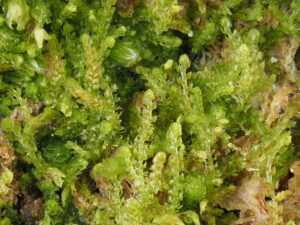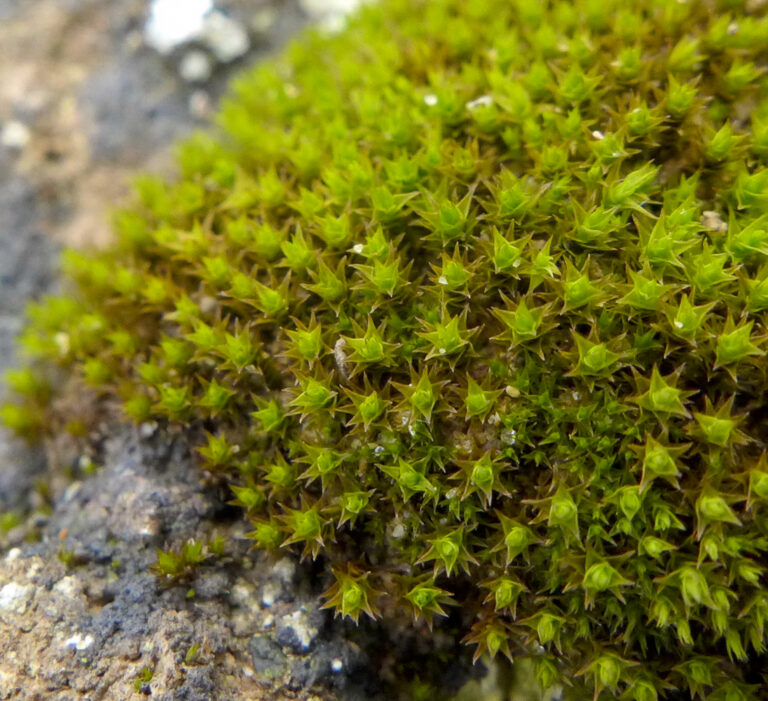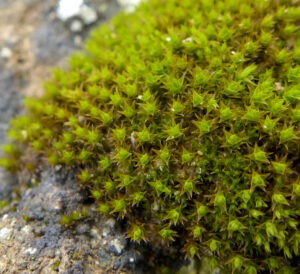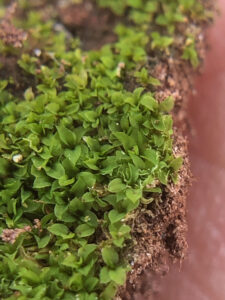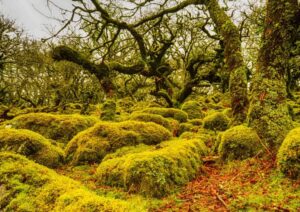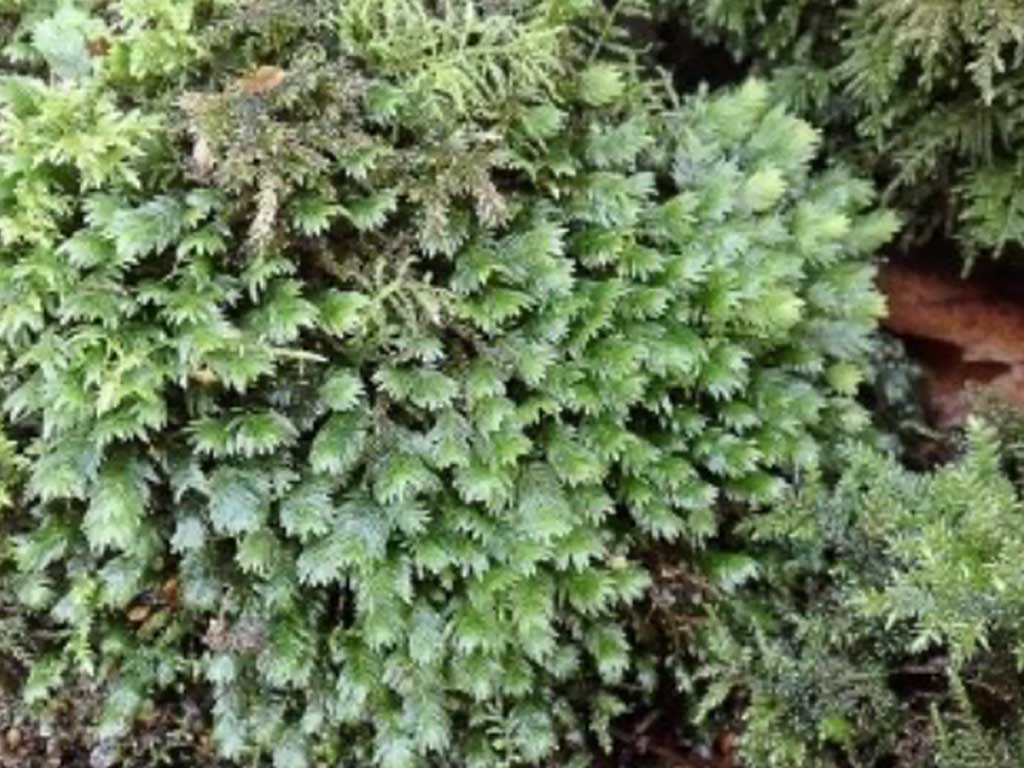Bryophytes are a group of ancient non-flowering plants that includes mosses, liverworts and hornworts. Some are found in damp and sheltered environments. Others have adapted to extreme conditions such as heat and drought. They can be found everywhere, from lawns and walls to dunes and rivers. One group of mosses and liverworts are even found on Devon’s toxic copper mine spoil heaps.
Bryophytes are often overlooked but play a vital environmental role. They absorb carbon, hold water, help to create peat bogs and provide habitats for microorganismsAn organism that can be seen only through a microscope. More. They are sensitive to pollution and good indicators of a healthy environment.
Devon’s diverse range of habitats and mild and wet climate mean around two-thirds of the UK’s 1,100 species of bryophytes are found here.
Some of the most valuable habitats for bryophytes are the wet, acidic peat bogs and mires found on Dartmoor, Exmoor, the Pebblebed Heaths and in the Blackdown Hills. Peat bogs are particularly important for Sphagnum communities, which have a colourful array of different species. Mires fed by groundwater rich in minerals such as calcium and magnesium are particularly valuable habitats for Sphagnum mosses. They can support scarce species such as rigid bogmoss (Sphagnum teres) and slender cow-horn bogmoss (Sphagnum subsecundum).
Temperate rainforests – also known as Atlantic oakwoods – of Dartmoor and Exmoor are also extremely important for bryophyte diversity. These ancient, humid woodlands provide ideal conditions for a wealth of oceanic bryophytes, many of which are absent from much of England.
Thirty-five threatened species are listed as Devon Species of Conservation Concern. Those identified as Devon Special SpeciesDevon Species of Conservation Concern which have been 'shortlisted' as needing particular action or attention (rather than being iconic species). More that need specific action or attention are discussed below.

